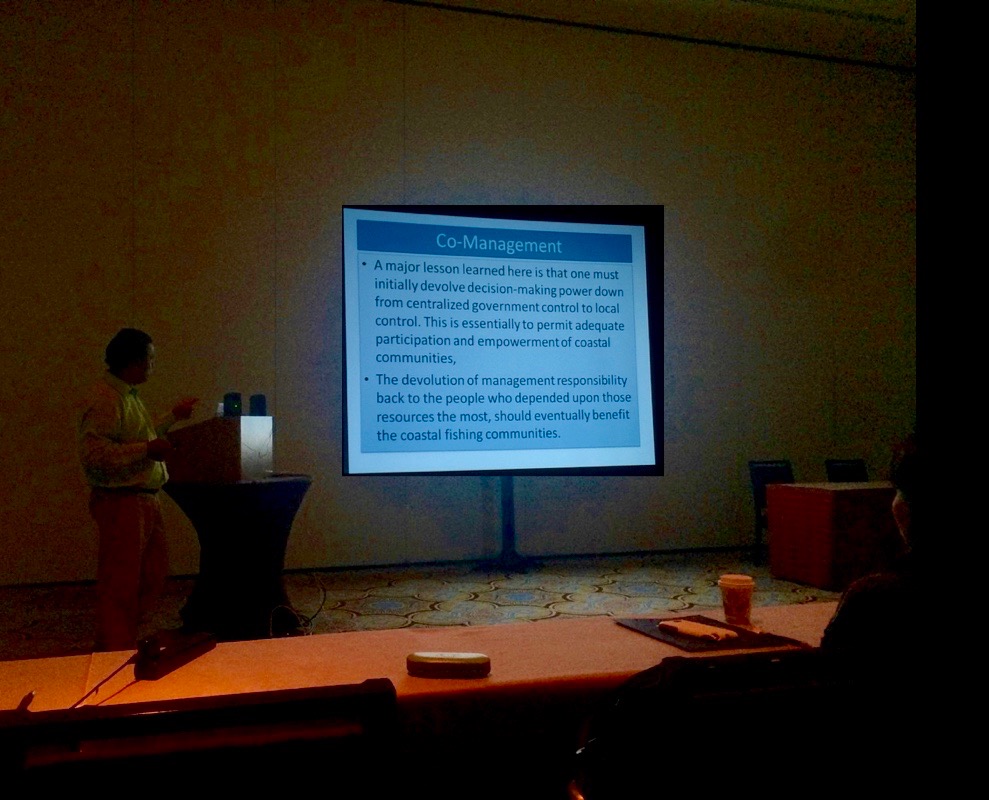In April, Candice attended the Coastal-Marine Ecosystem Based Management (EBM) Tools Training in San Juan, Puerto Rico facilitated by Nature Serve. Thank you to Kinship Conservation Fellows for supporting Candice’s attendance to this event. EBM Tools Network, a global network of coastal-marine EBM practitioners, researchers, and tool developers, facilitated the training workshop. The session was designed to address the needs of coastal-marine conservation and management practitioners.
Ecosystem-based management is an environmental management approach that recognizes the full array of interactions within an ecosystem, including humans, rather than considering single issues, species, or ecosystem services in isolation (Christensen et al. 1996, McLeod et al. 2005). Because humans depend on an array of ocean and coastal functions— including fish as food, for example — EBM recognizes that our welfare and the health of the environment are linked. Put another way, marine and coastal systems provide valuable natural services, or “ecosystem services”, for human communities. Therefore, to protect our long-term wellbeing, we need to ensure marine and coastal ecosystem functions and productivity are managed sustainably. This means managing them in a way that acknowledges the complexity of marine and coastal ecosystems, the connections among them, their links with land and freshwater, and how people interact with them (UNEP (2011): Taking Steps toward Marine and Coastal Ecosystem-Based Management – An Introductory Guide).
Candice chose to join the marine spatial planning (MSP) and marine protected area (MPA) planning and management theme for the training session. The group discussed stakeholder engagement and co-management strategies for MSP and MPA planning and management, learning from examples in Colombia and Grenada. The group was given an introduction and overview of the United Nations Environment Program (UNEP), Caribbean Marine Protected Areas Management Network and Forum (CaMPAM).
Dr. Martha Prada from UNEP gave a presentation on Design, Declaration and Implementation Strategies of the Seaflower MPA, a case of EBM in the Caribbean. This case study showed the complexities of MPA planning in Colombia and the need to engage all stakeholder groups, promote sustainable development in local communities, research & monitoring, environmental education, alternative livelihoods, licenses/permits, control pollution, and the implications of changing political climate.
Roland Baldeo, the National Marine Protected Area Coordinator for the Government of Grenada, gave an example of applied EBM by incorporating pig farmers into MPA management plans. This was achieved by educating farmers about the importance of safeguarding coral reefs and associated ecosystems through sustainable land management practices. By taking farmers on excursions to the areas of coral reef being damaged by pig waste run-off, they were able to demonstrate the linkages between sustainable land management practices and the health of marine ecosystems. This formed the Reef Guardian Farmers group, which recognizes and promotes practices such as proper fertilizer application and good water quality and soil management practices utilized by farmers.
Finally participants were trained to use Sea Sketch software by performing exercises from a MPA planning scenario in Barbuda using the program. This unique software enables users to not only incorporate biological data and habitat maps but also allows socio-economic data to be collected from stakeholders via an online link. This information is then visualized as a layer on the map. Fishermen in Barbuda were asked to identify their most important fishing sites, this allows for analytics to be run threw the software to quantify how many fishermen would be displaced based on various MPA placement scenarios, whilst also considering habitat and biological data.

